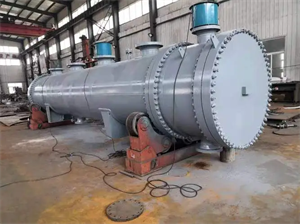What is the working principle of a heat pipe heat exchanger?
Industrial production in many steps needs us to carry out heat transfer, we use equipment with a heat transfer function to achieve the exchange of heat energy between the heat pipe heat exchanger also a lot of companies will use heat transfer equipment, but there are still many companies do not understand the working principle of heat pipe heat exchanger, today we will come together to understand it.

First, the role of the heat pipe heat exchanger
Heat pipe heat exchanger is a high thermal conductivity component, through the evaporation and condensation of the mass in the fully enclosed vacuum tube shell to transfer heat, with good thermal conductivity, good isothermal, hot and cold sides of the heat transfer area can be arbitrarily changed, can be a long-distance heat transfer, can be a series of advantages such as temperature control. The disadvantage is poor oxidation and high-temperature resistance. This disadvantage can be solved by installing a set of ceramic heat exchangers in the front, ceramic heat exchanger is a better solution to the problem of high-temperature resistance, and corrosion resistance.
Second, the application areas of the heat pipe heat exchanger
The tube heat exchanger has been widely used in metallurgy, chemical industry, oil refining, boilers, ceramics, transportation, textiles, machinery, and other industries, as waste heat recovery and process heat use of energy-saving equipment, and achieved good economic benefits.
Third, the principle of heat pipe heat exchanger
Heat pipe heat exchanger in a closed highly vacuum tubes or cylinders within the body wall set with a layer of porous capillary structure of the liquid-absorbing core, immersed in the liquid phase of the substance. An external heat source inputs heat in the evaporation section to evaporate and vaporize the mass. The steam flows to the condensation section for condensation, and the latent heat of vaporization released is sent to the outside world. The condensate shrinks into the suction core and flows back to the evaporation section by capillary pressure, completing the automatic circulation of the work material.

